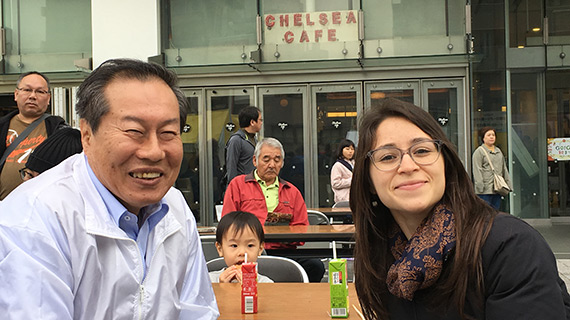Board Meeting held Wednesday 12th April
Thank you to all who attended the meeting last Wednesday. If I had not mixed up the timings we would have had 8 attendees – so apologies for the mix up but we had a good role up anyway. As discussed at the meeting please read about KIVA and give some consideration to donating a small amount to an account that I have established in the name of Rotary E-Club of D9700, Australia. Contact me by email for details of how to login and make a donation.
We can discuss starting to lend the funds we accumulate at the next Board meeting.
KIVA
Kiva is an international nonprofit, founded in 2005 and based in San Francisco, with a mission to connect people through lending to alleviate poverty. We celebrate and support people looking to create a better future for themselves, their families and their communities.
Website – https://www.kiva.org/
By lending as little as $25 on Kiva, anyone can help a borrower start or grow a business, go to school, access clean energy or realize their potential. For some, it’s a matter of survival, for others it’s the fuel for a life-long ambition.
100% of every dollar you lend on Kiva goes to funding loans. Kiva covers costs primarily through optional donations, as well as through support from grants and sponsors.
Kiva by the numbers:
2.4Million Borrowers in 83 Countries.
1.6M Lenders who have loaned $967.2M Loans funded through Kiva at 97.0% Repayment rate
It’s a loan, not a donation
Kiva believes lending alongside thousands of others is one of the most powerful and sustainable ways to create economic and social good. Lending on Kiva creates a partnership of mutual dignity and makes it easy to touch more lives with the same dollar. Fund a loan, get repaid, fund another.
You choose where to make an impact
Whether you lend to friends in your community, or people halfway around the world (and for many, it’s both), Kiva creates the opportunity to play a special part in someone else’s story. At Kiva, loans aren’t just about money—they’re a way to create connection and relationships.
Pushing the boundaries of a loan
Kiva started as a pioneer in crowdfunding in 2005, and is constantly innovating to meet people’s diverse lending needs. Whether it’s reinventing microfinance with more flexible terms, supporting community-wide projects or lowering costs to borrowers, we are always testing and learning.
Lifting one, to lift many
When a Kiva loan enables someone to grow a business and create opportunity for themselves, it creates opportunities for others as well. That ripple effect can shape the future for a family or an entire community.
Due diligence and monitoring
Kiva takes due diligence and monitoring very seriously as part of our responsibility to lenders and borrowers. We encourage all lenders to learn about the risks of lending on Kiva as Kiva does not guarantee repayment on any loans. Lending on Kiva may involve loss of principal, for a variety of reasons including if the borrower doesn’t repay, the Field Partner doesn’t repay or from currency loss.
The level of due diligence relevant to a specific loan on Kiva depends on a variety of factors, including how the loan is administered. Most loans on Kiva are administered by one of our local partners working in more than 80 countries. Kiva conducts due diligence on all Field Partners prior to allowing them to begin posting loans on the Kiva platform. To learn more about this process visit our Field Partner due diligence page.
Almost all Kiva loans for borrowers in the U.S. are direct loans, which are not administered by a Field Partner. This gives Kiva the ability to reach populations that even microlenders can’t or don’t serve, but it also means these loans often involve a higher level of risk or default. To learn more about the due diligence for these U.S. loans, please visit the due diligence page for direct loans.
The risks of lending
Microloans reach populations that have limited access to financial services, so these types of loans come with some inherent risks for lenders. When you lend money on Kiva, you may lose some or all of your principal. You should be aware of the different types of risk (some of which are outlined below) and find the right loan option for you, with respect to repayment risk and social return.
Kiva’s current repayment rate is reflected below. The “overall repayment rate for all loans” includes all loans in all countries, including loans that were repaid or defaulted and loans that are currently paying back. It also factors in currency loss. Please note that past repayment performance does not guarantee future results. To review the terms that apply to your use of Kiva, please see our terms of use.
In order to help reduce your risk exposure, you may wish to diversify your Kiva portfolio, thus reducing your exposure to any one borrower, Field Partner or country. For example, instead of placing $100 with 1 borrower, you may wish to place $25 with 4 borrowers in different countries.
Repayment rate statistics
- Repayment rate for all loans: 97.0%
- Repayment rate for ended loans only: 98.0%
- Repayment rate for partner facilitated loans: 97.2%
- Repayment rate for direct U.S. loans: 83.3%
- Borrower repayment rate for all loans: 97.5%
- Currency exchange loss rate: 0.5%













